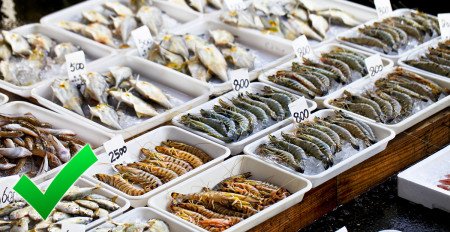Ensuring Food Safety and Fighting False Facts Amid Fukushima Water Discharge

LONDON, England, September 13, 2023 (Newswire.com) - After a recent rebrand, sustainable clean energy platform GreeNewclear, has been monitoring the latest developments regarding the Fukushima water release. Leveraging its comprehensive expertise in nuclear energy, GreenNewclear has gathered valuable insights pertaining to the measures taken to ensure food safety within the framework of the Fukushima water treatment process.
In a recent development, the Fukushima Daiichi Nuclear Power Plant has initiated the treated water release into the ocean, sparking a heated debate on food safety concerns. The decision to commence the discharge led by Tokyo Electric Power Company (TEPCO), is backed by extensive research and supported by international experts such as the International Atomic Energy Agency (IAEA).
Supporters emphasize the thorough treatment process that the water undergoes before being released. The Advanced Liquid Processing System (ALPS) has been utilized to remove isotopes, making the water safe for discharge. Proponents argue that radioactive levels of the treated water will be below international safety standards, and the controlled release is the best option to prevent further environmental damage.
Conversely, neighboring countries have raised objections, citing fears of seafood contamination and negative impacts on fishing industries. Controversy and misinformation have fueled anxieties, particularly in China and in South Korea, where anti-Japanese sentiment runs high. Since the discharge began almost two weeks ago, China has extended its ban on seafood imports from Japan to encompass the entire country, exacerbating fears.
In contrast to the opposition, high-ranking officials have taken proactive measures to ensure food safety. Japan's Prime Minister Fumio Kishida, and Economic Minister, Yasutoshi Nishimura, publicly enjoyed sashimi and other locally produced food to reassure the public and demonstrate its safety. US Ambassador to Japan, Rahm Emanuel, visited Fukushima, had a seafood lunch, emphasized safety as well and criticized China's seafood ban as politically motivated. The Singapore Food Authority (SFA) issued a statement that they have not found contaminated seafood from Japan following the release.
In a further display of support, the European Union and Switzerland, who placed a ban on Japanese seafood, have lifted the ban over the past few weeks. While understanding the concerns of those opposed to the release, the weight of scientific consensus clearly leans towards supporting this carefully managed approach.
Experts have emphasized time and again the enormous volume of water already present in the Pacific Ocean and note that the release will be spread over many years, minimizing any potential risks. The gradual release, coupled with rigorous monitoring and transparency in reporting, provides additional layers of safety. Now that the discharge has begun and the actual measurements are starting to become available, it is clear that the safety issue is even better than expected. TEPCO, backed by the IAEA, vows to ensure the safety thresholds are constantly met until the discharge is completed.
Source: GreeNewclear